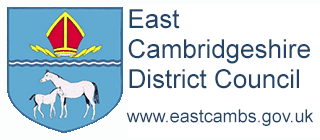Acrylamide is a chemical naturally formed when starchy foods (for example, bread, potatoes, biscuits and coffee) are baked, fried, or roasted at high temperatures. Prolonged exposure to elevated levels of acrylamide has been shown to cause cancers in animals. However, the evidence in humans is not as clear. Although humans are usually exposed to doses lower than those used in animal research, the general advice is to keep exposure low by taking care when cooking starchy foods, limiting acrylamide formation.
What are the potential health effects of acrylamide?
Scientific tests show that too much acrylamide in the diet has the potential to cause cancer in humans, with young children most at risk.
Where is it found?
It is found in a wide range of foods including roasted potatoes and root vegetables, chips, crisps, toast, cakes, biscuits, cereals and coffee.
What must food business do?
Assimilated Regulation (EC) 2017/2158 states that food businesses must control how much acrylamide is in specific foods they produce all along the production process 'from farm to fork'.
The law lists specific foods that require action to be taken to reduce acrylamide:
- french fries, other cut (deep fried) products and sliced potato crisps from fresh potatoes
- potato crisps, snacks, crackers, other potato products from potato dough
- bread (Includes pizza, toast, and toasted products)
- breakfast cereals (excluding porridge)
- fine bakery wares: cookies, biscuits, rusks, cereal bars, scones, cornets, wafers, crumpets, and gingerbread, as well as crackers, crisp breads, and bread substitutes
- coffee (and coffee substitutes)
- baby food and processed cereal-based food intended for infants and young children
What should this this look in practice?
In general, all businesses will need to consider acrylamide in their written Food Safety Management System as a Chemical Hazard (potential to cause harm), put in place appropriate controls to reduce it to a safer level, monitor this effectively and take corrective action when something goes wrong. The degree of documentation depends on the size and nature of the food operation.
Management must:
- set up safe operating procedures (SOPs), instructions or guidance to include following manufacturer's instructions for bought-in, part- baked or frozen products to finish cooking on site, for example bread, croissants or biscuits
- maintain equipment (especially thermostat controls) in clean and good working order
- train staff of the dangers and their role in applying the controls
The safer food better business (caterers) pack (external link PDF) was updated in November 2019 to include a section of this.
We have also produced some helpful guidance notes for you to download and read (PDF)
